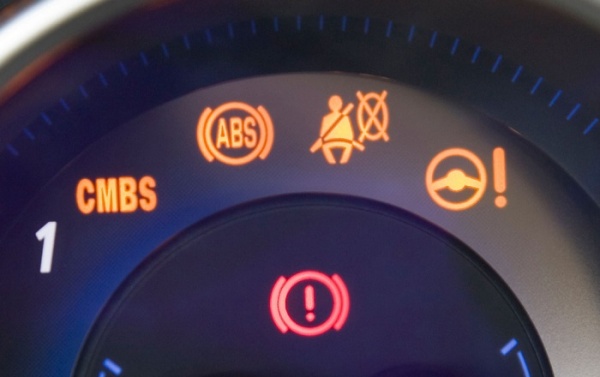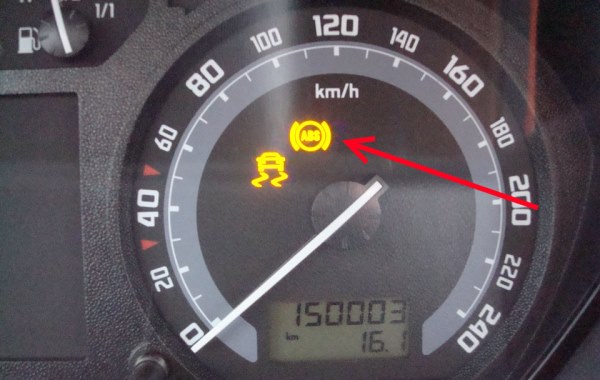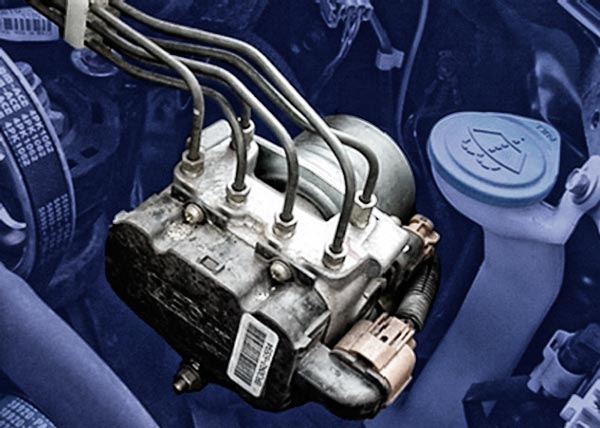Most modern cars are equipped with anti-lock braking systems from the factory, and drivers are already quite accustomed to the constant help of ABS when braking. Despite minor shortcomings, the ABS turned out to be one of the most effective systems, which made it possible not only to shorten the braking distance, but also to maneuver during emergency braking.
Any car without ABS, when trying to slow down on a slippery road and at the same time make a turn / change lane, is guaranteed to go into a skid, which can end very badly. Therefore, it is enough to drive a car with ABS for quite a bit to get used to this level of comfort, and in the event of its failure, most car owners are completely unprepared for this. It often happens that the ABS light is on on the panel, but no action is taken by the driver to correct this situation.
Why does the ABS light come on
The ABS light located on the dashboard serves to promptly inform the driver about a malfunction of this system. So, each time the engine is started, the ABS system undergoes a self-test, during which the indicator is always on. It takes no more than three seconds to determine possible malfunctions, after which the indicator goes out. If this does not happen, you can be sure that with reckless braking on any surface you can forget.

Since the ABS is a fairly complex system, in order to understand what the problem is when the ABS light comes on, you need to imagine what it consists of. There are three main elements of the system.
- The electronic unit - it is he who makes decisions and controls the entire system.
- Hydraulic unit - is responsible for the pressure in the brake system, and at the moment of blocking the wheels caused by pressing the brake pedal, it lowers the pressure in the brake system, allowing the wheel to rotate.
- Sensors that read the number of revolutions of the wheel. They are located on each hub and constantly transmit information to the central unit.
If the ABS is lit on the instrument panel, the error code, the alphanumeric designation of which is displayed on the on-board computer display, will help you figure out what the cause is. You can decipher it by reading the car's instruction manual or by searching for information on the Internet.
Advice! If the ABS icon lights up at the time of starting the engine, it is not recommended to start driving. Despite the fact that the car will not be left without brakes, it will be difficult for the driver to quickly get used to the need to brake in a new way. In addition, the performance of some other driving assistance systems also depends on the ABS.
The ABS icon is on - possible causes of a malfunction
Despite the sufficient complexity of the system, when the ABS and an exclamation mark are on after starting the engine, there can be relatively few reasons for this:

In the event that the ABS ESP lights come on, it is still not recommended to continue or start driving. It should be understood that if the malfunction is related to sensors, wiring or a battery, it is quite possible to fix them yourself, but malfunctions of the central or hydraulic unit will require the intervention of professionals with the appropriate equipment. It is possible to independently try to climb into these complex knots only with the necessary knowledge and experience.
What can you do yourself if the ABS light is on
The very first thing you should pay attention to when the ABS lights up is the error code that appears on the on-board computer display. Having deciphered it, it will become clear what exactly caused the malfunction and whether it is possible to try to eliminate it on the spot. If the problem is in the sensors, then before looking for a faulty sensor or a place where the wiring is damaged, you can try to turn off the engine for a couple of minutes and start it again - in some cases, the ABS lamp goes out.

If this does not help, you will have to raise the car on a lift or check each sensor, successively jacking up all the wheels. The work is not clean, but it must be done. You should first arm yourself with a multimeter that can operate in ohmmeter mode, since the main method for diagnosing sensors is to measure the resistance of each of them. If the testing of the sensors did not reveal a malfunction, you should carefully examine all the wires with which they are connected to the central unit. The insulation must not be broken, and all connecting terminals must be free of signs of oxidation and dirt.
Consequences of a faulty ABS
In the event that the ABS indicator lights up for an inexperienced driver who has never driven a car without an anti-lock braking system, the consequences may not be pleasant, especially in winter. It will not be easy for the driver to remain without the support of this system, and if, out of habit, he tries to fully depress the brake pedal on a slippery road, and besides, making even a small maneuver, he will easily fly off the road on locked wheels.
If the ABS lamp does not burn constantly, but only periodically flashes for a certain time while driving, this will also negatively affect safety. The fact is that if during the movement the ABS is periodically deactivated, then at the moment the system starts working, the electric pump begins to take part of the brake fluid. If at this moment you press the brake pedal, it will simply fall into the floor - it is very easy for an inexperienced driver to get confused in such a situation, especially at high speed. Of course, after a moment, the braking system is restored, but sometimes these seconds may not be enough to stop the vehicle in a timely manner. If possible, it is still better to contact a professional to diagnose the entire system - you can see how this is done in the video:







